Sticky Postings
By fabric | ch
-----
As we continue to lack a decent search engine on this blog and as we don't use a "tag cloud" ... This post could help navigate through the updated content on | rblg (as of 09.2023), via all its tags!
FIND BELOW ALL THE TAGS THAT CAN BE USED TO NAVIGATE IN THE CONTENTS OF | RBLG BLOG:
(to be seen just below if you're navigating on the blog's html pages or here for rss readers)
--
Note that we had to hit the "pause" button on our reblogging activities a while ago (mainly because we ran out of time, but also because we received complaints from a major image stock company about some images that were displayed on | rblg, an activity that we felt was still "fair use" - we've never made any money or advertised on this site).
Nevertheless, we continue to publish from time to time information on the activities of fabric | ch, or content directly related to its work (documentation).
Wednesday, March 12. 2025
Note: fabric | ch is part of the exhibition Summoning the Ghosts of Modernity at the Museo de Arte Moderno de Medellin (MAMM), in Colombia.
The show constitutes a continuation of Beyond Matter that took place at the ZKM in 2022/23, and is curated by Lívia Nolasco-Rószás and Esteban Guttiérez Jiménez.
The exhibition will be open between the 13th of March and 15th of June 2025.
-----
By fabric | ch

Atomized (re-)Staging (2022), by fabric | ch. Exhibited during Summing the Ghosts of Modernity at the Museo de Arte Moderno de Medellin (MAMM). March 13 to June 15 2025.
More pictures of the exhibtion on Pixelfed.
Wednesday, March 22. 2023
Note: fabric | ch is taking part next week in this webinar about digital museums, organized by ZKM. Participants include members from ZKM Hertz-Lab, Ars Electronica Futurelab, CCCB in Barcelona, Aalto University and Futurium in Berlin.
Via ZKM | Karlsruhe (research project & exhibition: Beyond Matter)
-----
Monday, March 13. 2023
Note: a brief video documentation about one of fabric | ch's latest project – Atomized (Re)Staging – that was exhibited at ZKM during Matter. Non-Matter. Anti-Matter.
The exhibition was curated by Lívía Nolasco-Roszás and Felix Koberstein and took place ibn the context of the European research project Beyond Matter.

Via fabric | ch's Vimeo
-----
Monday, June 21. 2021
Note: an online talk with Patrick Keller, lead archivist and curator Sang Ae Park from Nam June Paik Art Center (NJPAC) in Seoul, and Christian Babski from fabric | ch.
The topic will be related to an ongoing design research into automated curating, jointly led between NJPAC, ECAL and fabric | ch.
-----
Via Nam June Paik Art Center

How would Augmented Reality change exhibition curating and design in the future? Join our June Science Club and learn how the ECAL and Nam June Paik Art Center are collaborating to develop a novel range of museums. This talk program is hosted by Swissnex and Embassy of Switzerland in the Republic of Korea. All talks shall be in English.
---
Date
June 24, 2021. 17:00 – 18:00
Venue
Zoom
Panels
Patrick Keller (Associate Professor, ECAL / University of Art and Design Lausanne (HES-SO))
Sang Ae Park (Archivist, Nam June Paik Art Center)
Christian Babski (Co-founder fabric | ch)
---
Inquiry
library@njpartcenter.kr
Friday, August 28. 2020
Note: the discussion about "Data Materialization" between Nathalie Kane (V&A Museum, London) and Patrick Keller (fabric | ch, ECAL / University of Art and Design Lausanne (HES-SO)), on the occasion of the ECAL Research Day, has been published on the dedicated website, along with other interesting talks.
-----
Via ECAL
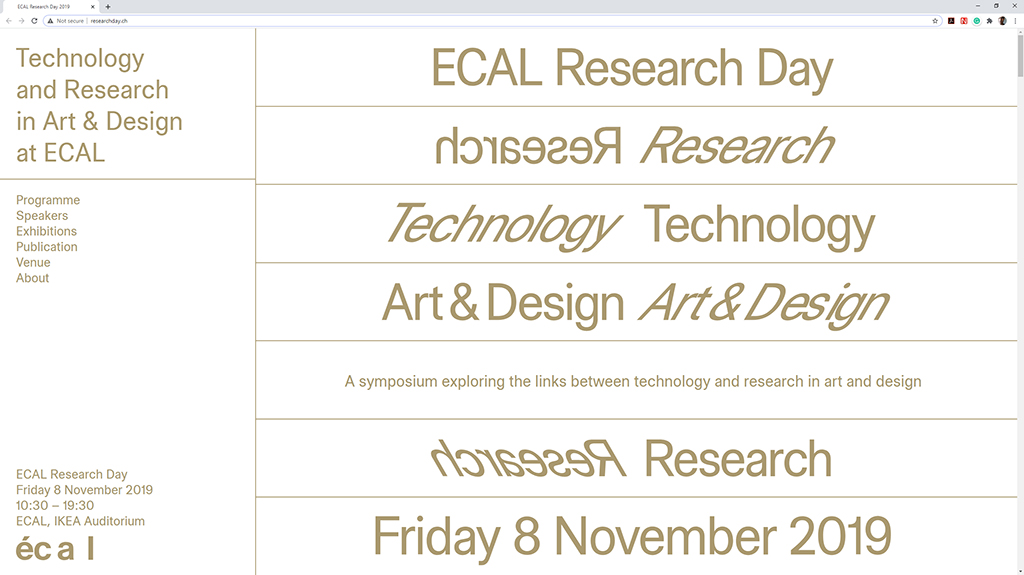
Research Day 2019 Natalie D. Kane from ECAL on Vimeo.
Thursday, July 28. 2011
Via Pruned
-----
by Alexander Trevi

(Photo courtesy of the Center for PostNatural History.)
We've always liked the work produced by the Center for PostNatural History, so it's great to hear that they've recently opened a central location in Pittsburgh, Pennsylvania, to house their collections, a ragtag bunch that usually travels around from galleries to museums to more atypical exhibition spaces. It's not Plum Island though.
Tuesday, March 15. 2011
Personal comment:
Could we consider to extend museums into outer or deep space?
We know that there are some art programs with the Nasa and the European Space Agency, but there are no permanent exhibition structures into space at the moment! (a memorial on the Moon possibly) ... Maybe one part of the Space Station could become an extension of the global Guggenheim ... Guggenheim Space ;) ... or maybe something more interesting!
Tuesday, February 15. 2011
Via Michelle Kasprzak via @chrstphggnrd
-----
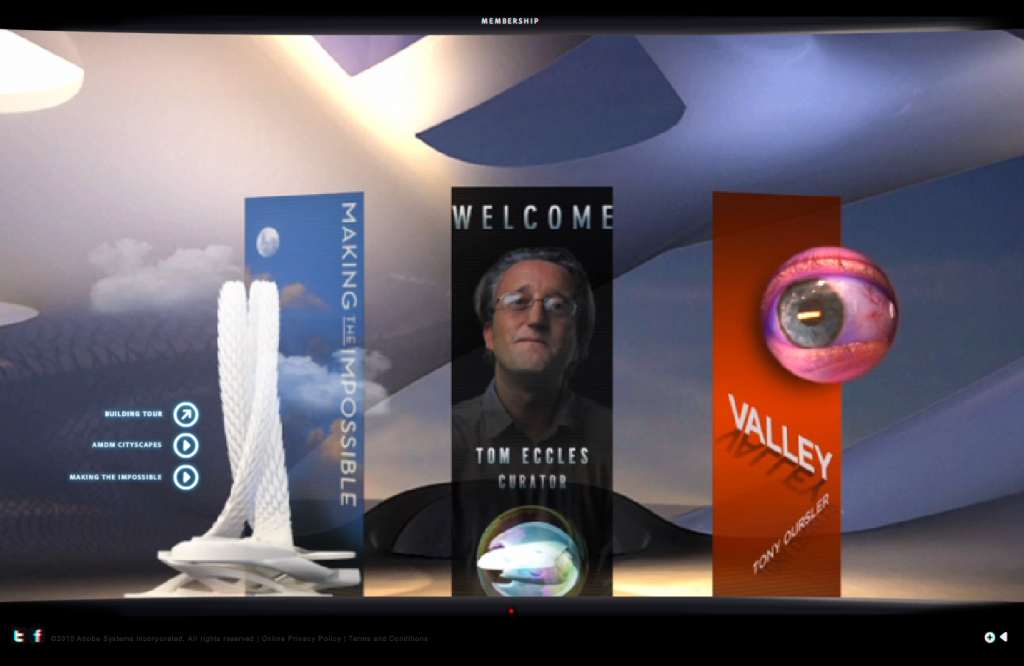
Adobe Museum of Digital Media
Rhizome recently published a piece I wrote entitled “Moving the Museum Online“. The piece was a critique of the Adobe Museum of Digital Media, and also served as a platform to discuss the concept of online museums, and highlight a few examples that I thought were particularly noteworthy, including the Virtual Museums of Canada, the Museum of Online Museums, the MINI Museum, and Google’s recent Art Project.
In both the comments section on the piece and through Twitter comments and emails, people have kindly been pointing out other examples of online museums that are of interest. Here are three that stood out:
Guggenheim Virtual Museum (vintage: 2001): “The Solomon R. Guggenheim Museum has commissioned the New York firm Asymptote Architects to design and implement a new Guggenheim Museum in cyberspace. This is the first phase of a three-year initiative to construct an entirely new museum facility. The structure will be an ongoing work in process, with new sections added as older sections are renovated. The project will consist of navigable three-dimensional spatial entities accessible on the Internet as well as real-time interactive components installed at the various Guggenheim locations.
As envisioned by Asymptote and the Guggenheim, the Guggenheim Virtual Museum will emerge from the fusion of information space, art, commerce, and architecture to become the first important virtual building of the 21st century.”
muSIEum (vintage: unknown, pre-2009): This online reconfiguration of four Viennese museums “…displaying gender, criticizing the conventional hegemonial ordering of things”, and “bringing out the different storylines that could (have) been told with the same objects from a standpoint counter-acting the cultural hegemony of the patriarchal view”. An intervention that is needed not just in Vienna, I’d wager. In German only.
MIX-m (vintage: 2001 – 2003): “MIX-m stands for MIXed-museum. It is a contemporary art museum that exists both in physical and digital spaces, in localized and networked environments. MIX-m plays with the dimensions of its architecture: a mix between a real museum space (here, the Bâtiment d’Art Contemporain in Geneva) (1:1), a digital space based on the dimensions of its host (1:x) and a model of this game-like environment (1:50). MIX-m has the ability to re-locate itself into this existing exhibition environment, transforming, mixing and extending it into new territories. It offers therefore a variable environment to create art installations. These works, commissioned by MIX-m, can now define and modulate their presence inside an extended space spectrum: physical-digital, real-simulated, localized-networked.”
Read Moving the Museum Online on Rhizome, and join the discussion there or send me a Tweet (@mkasprzak) with your own suggestions of other virtual museum projects that exemplify either the lack in current physical museums (as muSIEum does), an additionality (as with the Guggenheim), or a hybrid space (MIX-m).
Tuesday, January 25. 2011
Via Designboom
-----
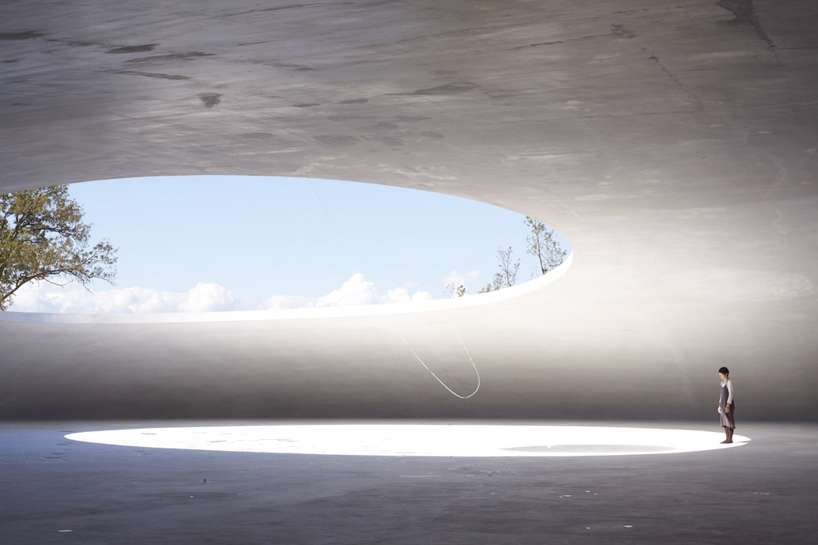
'teshima art museum' by ryue nishizawa and rei naito on teshima island
photo © noboru morikawa photos
'teshima art museum' by tokyo-based architect ryue nishizawa and japanese artist rei naito
recently welcomed visitors of the 2010 setouchi international art festival held on seven islands
in the takamatsu port area, japan. hugging a hilly site on the island of teshima, the museum
resembles a droplet of water caught in the middle of gliding across the land.
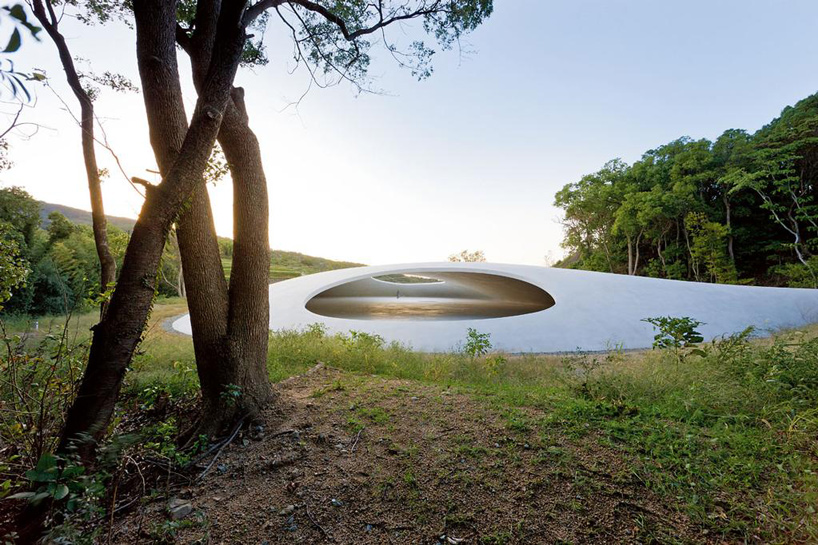
exterior view
image © iwan baan
see more images at domus
overlooking the inland sea to the north, the collaborative project was designed to interact
with its wooded surrounding, pushing the tangible boundary between architecture and nature.
two large elliptical openings define and orient the space while letting the interior collect pieces
of the elements: pools of water accumulate on the floor and freely shift and migrate according
to the breeze's direction; the sounds from the sea and foliage reverberate through the open space
while the ambiance is in constant change according to the sun's position and time of day.
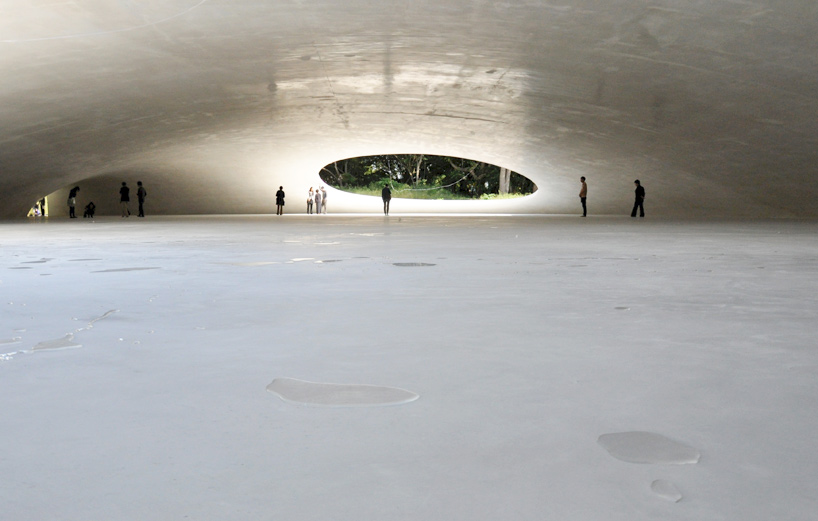
collected rain water inside the museum
image courtesy lllabo
at 25 cm thick, the white concrete pod shell is devoid of any pillars or visible structural aid.
the gallery space is not a result of encapsulation but a careful negotiation between
the earth and the sky. visitors are encouraged to freely walk around the 40 by 60 meter
museum and connect with the present phenomena.
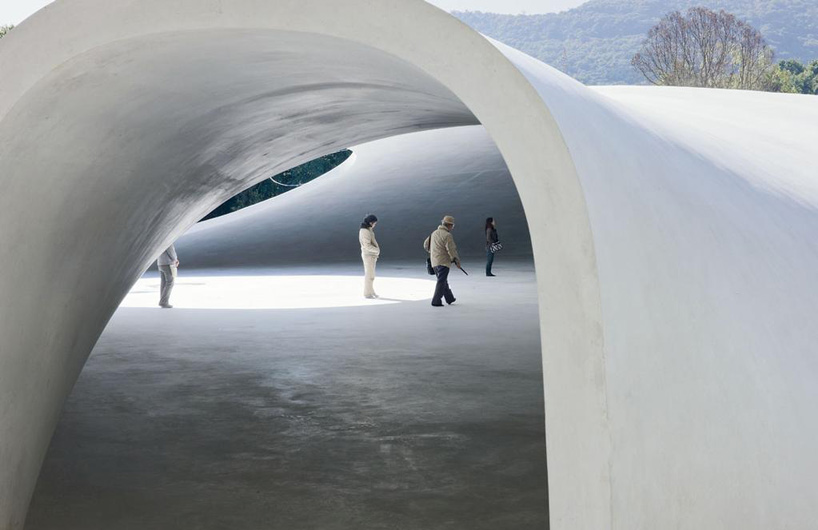
looking in to the interior
image © iwan baan
see more images at domus
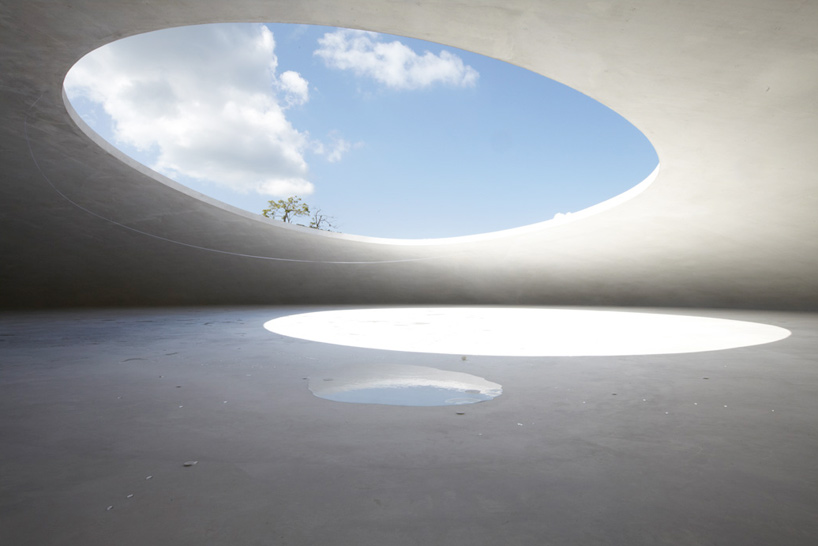
large cut-out
photo © noboru morikawa photos
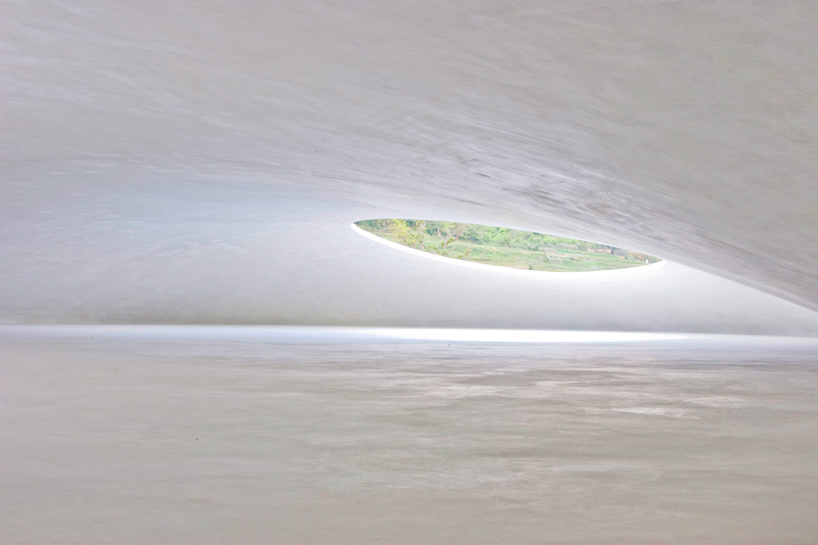
image courtesy office of ryue nishizawa
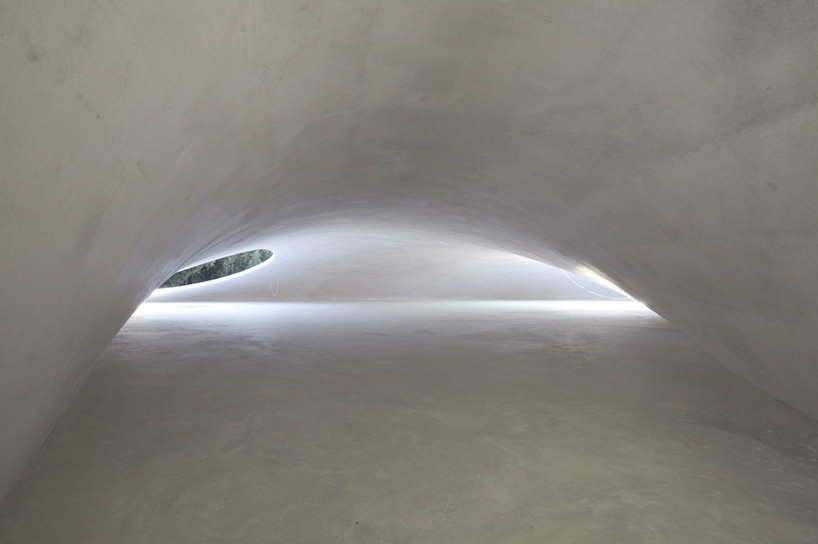
photo © noboru morikawa photos
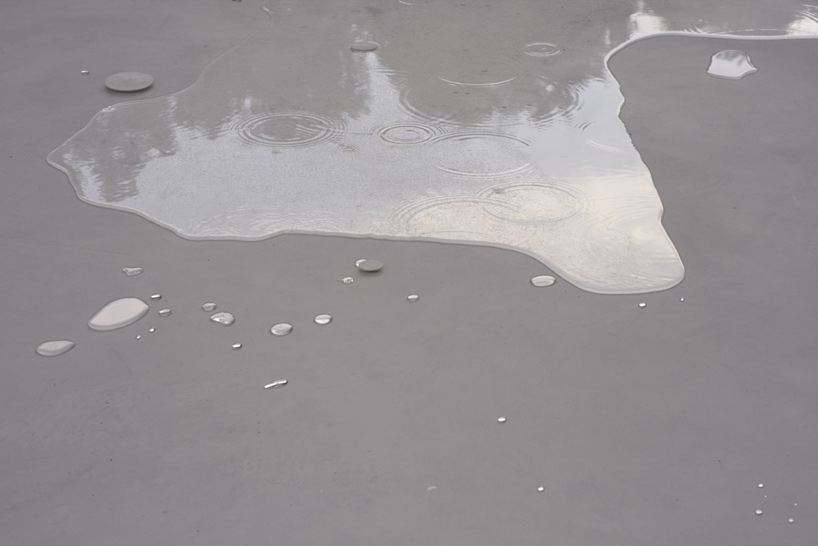
a part of rei naito's work entitled 'matrix'
photo © noboru morikawa photos
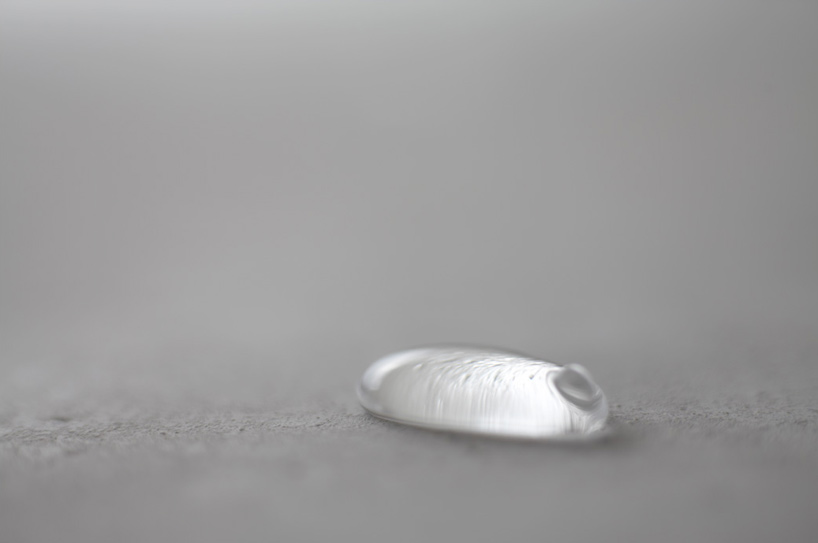
photo © noboru morikawa photos
a meandering path around the site take visitors around mt. myojin, a small bluff between
the museum and the sea. the form and presence of the structure seemingly fluctuates with
the observer's vantage point, much like a dynamic drop of water traveling across a surface.
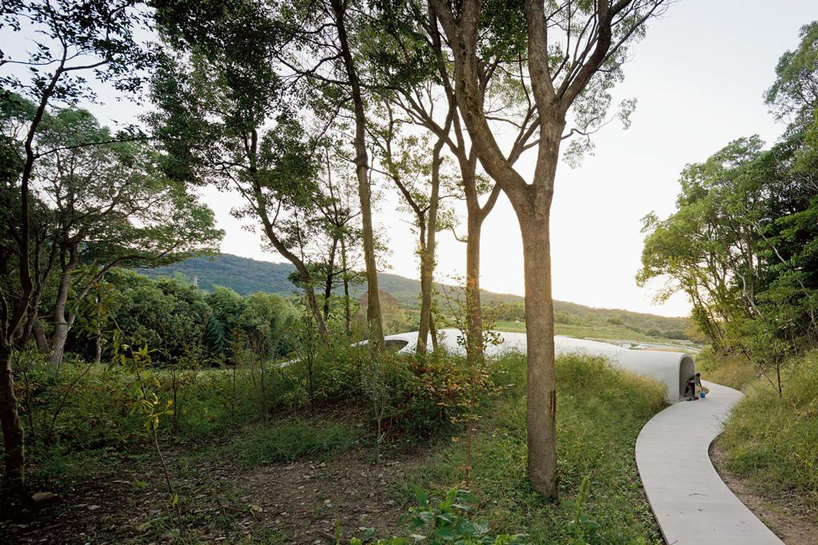
outside promenade
image © iwan baan
see more images at domus
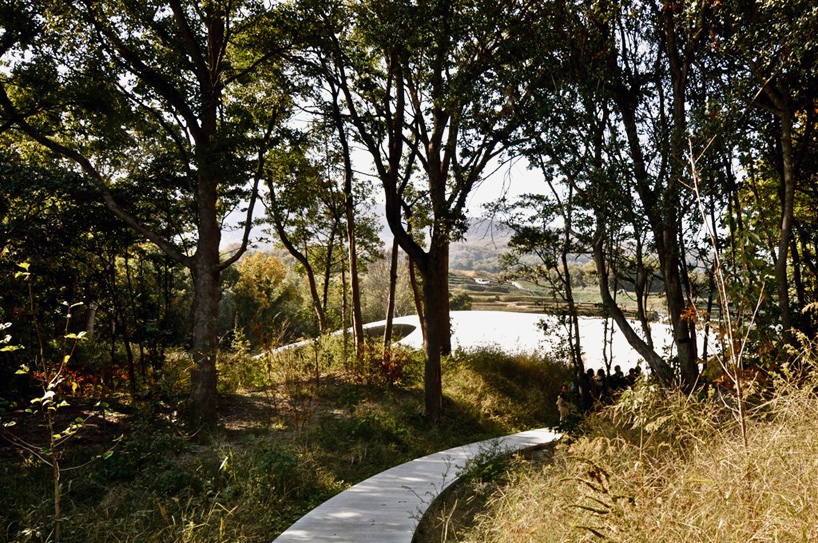
art museum in context
image courtesy prkbkr
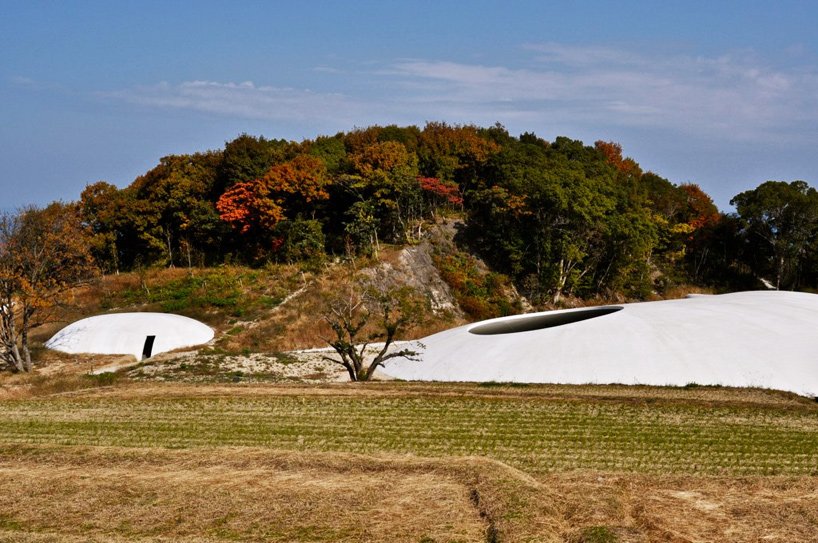
image courtesy prkbkr
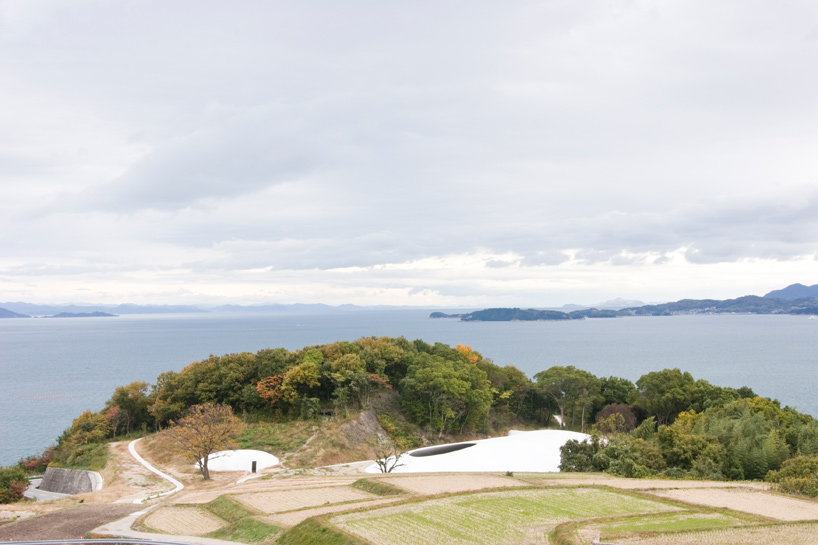
image courtesy office of ryue nishizawa
made possible by the patronage of the naoshima fukutake art museum foundation,
the teshima art museum will continue to operate after the festival, hosting activities involving
art, architecture, food, the environment, and other creative intersections.
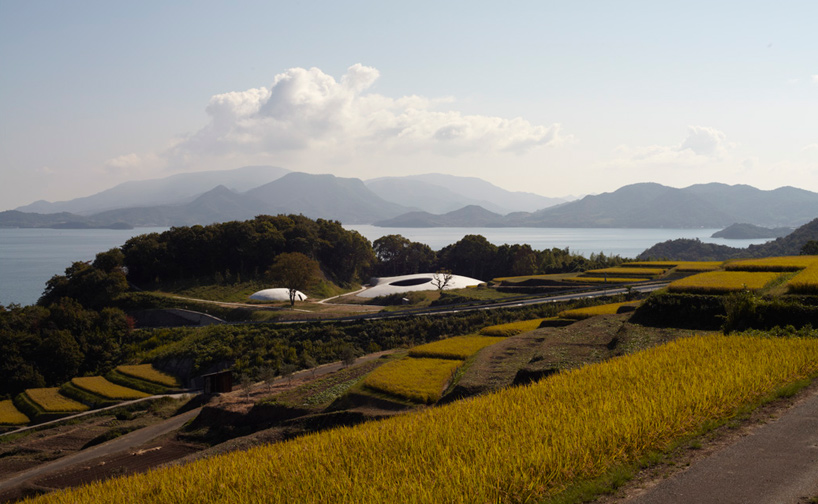
the museum adjacent to the nearby rice terraces
photo © noboru morikawa photos
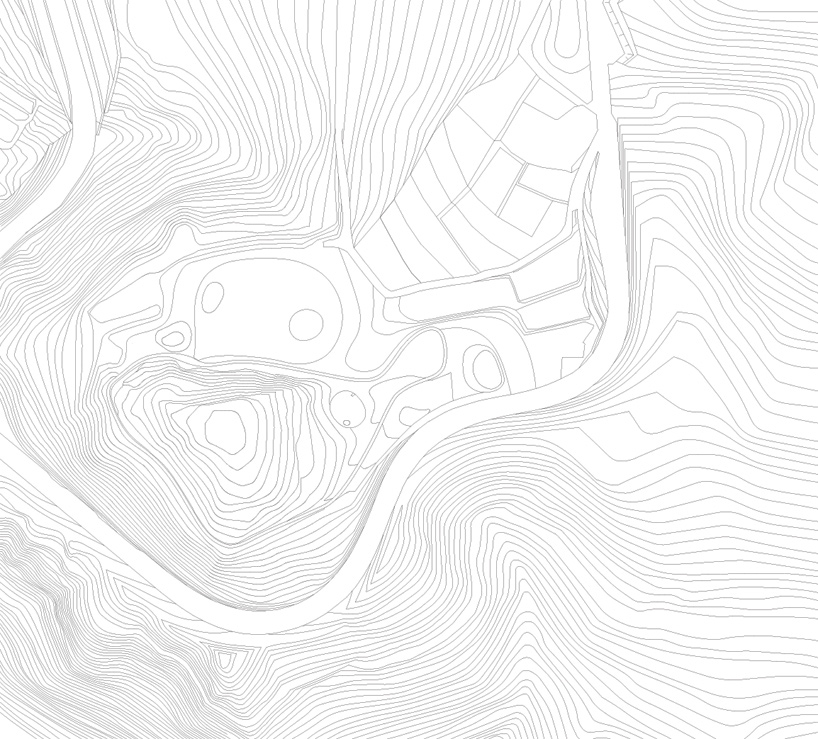
site plan
image courtesy office of ryue nishizawa
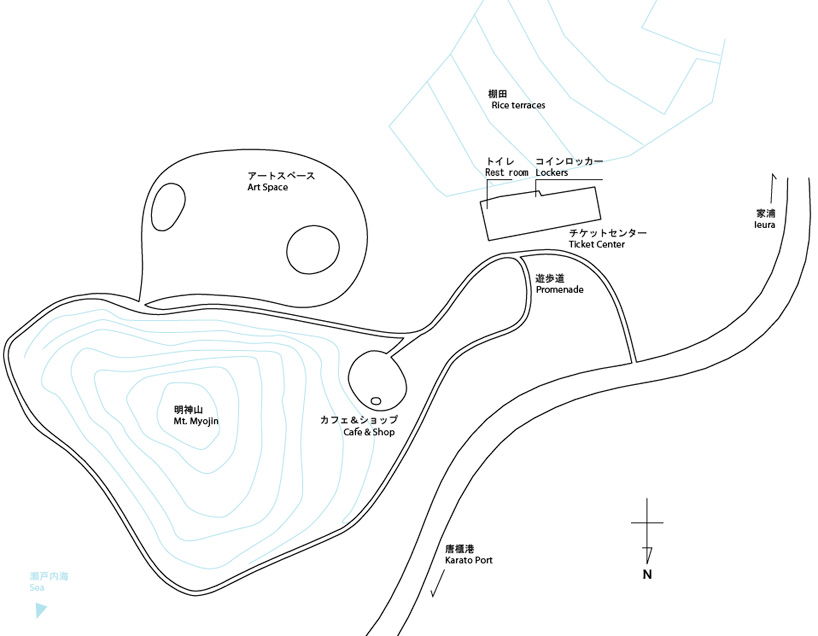
contextual site plan
image courtesy naoshima fukutake art museum foundation
about ryue nishizawa:
born in 1966, nishizawa joined kazuyo sejima & associates in 1990,
established SANAA with her in 1995, and established his own practice
in 1997. along with sejima, he was awarded the pritzker architecture prize
in 2010. significant works include, 'honmura lounge and archive' (2005, naoshima),
'moriyama house' (2005, tokyo), and the 'towada art center' (2008, aomori).
about rei naito:
born in hiroshima in 1961, naito's major exhibitions and projects include
'being given' (2001, kinza, art house project, benesse art site naoshima),
'un luogo sulla terra' (1997, japanese pavilion, 47th venice biennale),
'tout anial est dans le monde comme de l'eau a interieur de l'eau'
(2009, museum of modern art, kamakura).
--
be sure to check out raymund ryan's coverage of the museum for domus
with the always stunning photographs by iwan baan by clicking here.
|






















